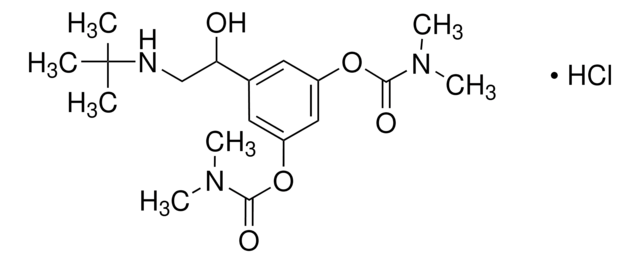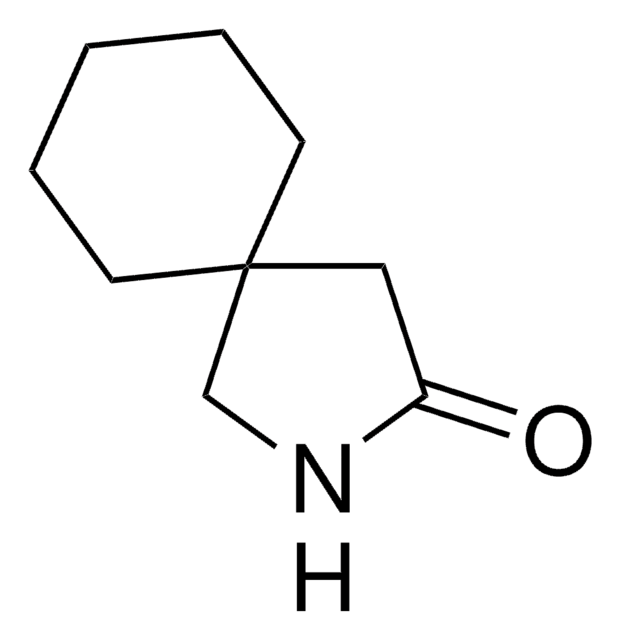40409
3,7-Dimethyluric acid
≥95.0% (HPLC)
Sinónimos:
3,7-Dimethyl-2,6,8-trihydroxypurine
Iniciar sesiónpara Ver la Fijación de precios por contrato y de la organización
About This Item
Fórmula empírica (notación de Hill):
C7H8N4O3
Número de CAS:
Peso molecular:
196.16
Beilstein:
218966
Número MDL:
Código UNSPSC:
12352100
ID de la sustancia en PubChem:
NACRES:
NA.22
Productos recomendados
Ensayo
≥95.0% (HPLC)
mp
≥300 °C
cadena SMILES
CN1C(=O)NC(=O)C2=C1NC(=O)N2C
InChI
1S/C7H8N4O3/c1-10-3-4(8-6(10)13)11(2)7(14)9-5(3)12/h1-2H3,(H,8,13)(H,9,12,14)
Clave InChI
HMLZLHKHNBLLJD-UHFFFAOYSA-N
¿Está buscando productos similares? Visita Guía de comparación de productos
Descripción general
3,7-Dimethyluric acid (3,7-DMU, 3,7-Dimethyl-2,6,8-trihydroxypurine), a purine derivative, is a dimethylated uric acid. It has a pyrimidine ring fused to an imidazole ring. Mechanism of the transformation of theobromine to 3,7-DMU in rat liver microsomal incubations has been investigated.
3,7-Dimethyluric acid is a primary theobromine (TB; 3,7-dimethylxanthine) metabolite. Electrochemical oxidation of 3,7-dimethyluric acid gives two voltammetric oxidation peaks (Ia and IIa) at a pyrolytic graphite electrode in aqueous solution.
Envase
Bottomless glass bottle. Contents are inside inserted fused cone.
Producto relacionado
Referencia del producto
Descripción
Precios
Código de clase de almacenamiento
13 - Non Combustible Solids
Clase de riesgo para el agua (WGK)
WGK 3
Punto de inflamabilidad (°F)
Not applicable
Punto de inflamabilidad (°C)
Not applicable
Equipo de protección personal
Eyeshields, Gloves, type N95 (US)
Elija entre una de las versiones más recientes:
¿Ya tiene este producto?
Encuentre la documentación para los productos que ha comprado recientemente en la Biblioteca de documentos.
Oxidation chemistry of 3, 7-dimethyluric acid: electrochemical and peroxidase-catalyzed mechanisms.
Chen TR and Dryhurst G.
J. Electroanal. Chem. Interfac. Electrochem., 177(1), 149-165 (1984)
Miquel Rojas-Cherto et al.
Analytical chemistry, 84(13), 5524-5534 (2012-05-23)
Multistage mass spectrometry (MS(n)) generating so-called spectral trees is a powerful tool in the annotation and structural elucidation of metabolites and is increasingly used in the area of accurate mass LC/MS-based metabolomics to identify unknown, but biologically relevant, compounds. As
A Lelo et al.
Xenobiotica; the fate of foreign compounds in biological systems, 20(8), 823-833 (1990-08-01)
1. The involvement of glutathione (GSH) and cytochrome P-450 in the conversion of theobromine to 6-amino-5-(N-methylformylamino)-1-methyluracil (3,7-DAU) and 3,7-dimethyluric acid (3,7-DMU) has been investigated in rat liver microsomal incubations. 2. The ratio of formation of 3,7-DAU to 3,7-DMU increased with
Binxing Zhou et al.
BMC microbiology, 20(1), 269-269 (2020-08-29)
Methylxanthines, including caffeine, theobromine and theophylline, are natural and synthetic compounds in tea, which could be metabolized by certain kinds of bacteria and fungi. Previous studies confirmed that several microbial isolates from Pu-erh tea could degrade and convert caffeine and
S Gates et al.
British journal of clinical pharmacology, 47(3), 299-305 (1999-04-24)
The plasma clearance of theobromine (TB; 3,7-dimethylxanthine) is known to be induced in cigarette smokers. To determine whether TB may serve as a model substrate for cytochrome P450 (CYP) 1A2, or possibly other isoforms, studies were undertaken to identify the
Nuestro equipo de científicos tiene experiencia en todas las áreas de investigación: Ciencias de la vida, Ciencia de los materiales, Síntesis química, Cromatografía, Analítica y muchas otras.
Póngase en contacto con el Servicio técnico







